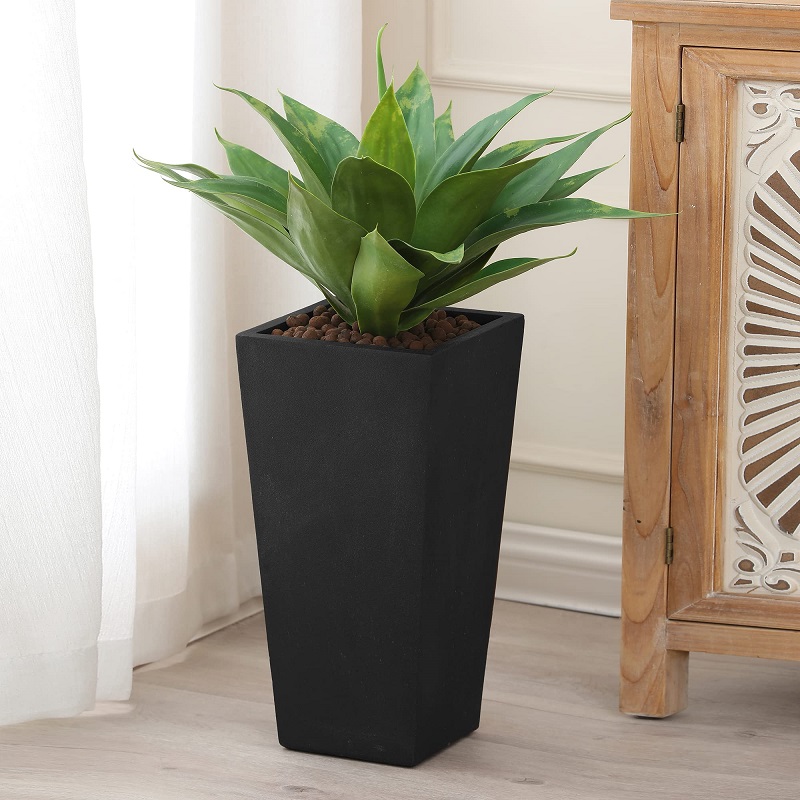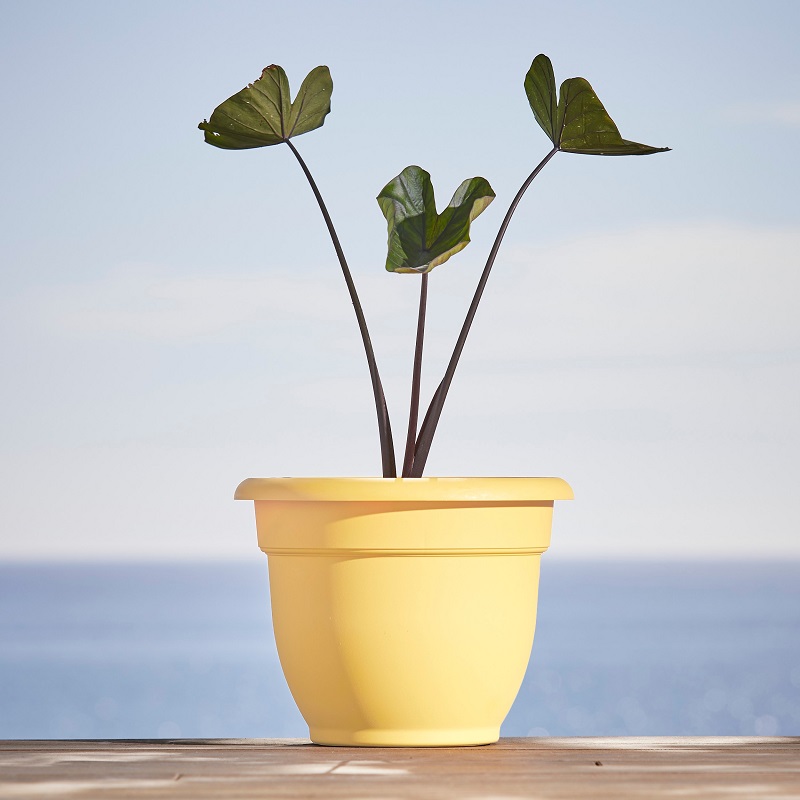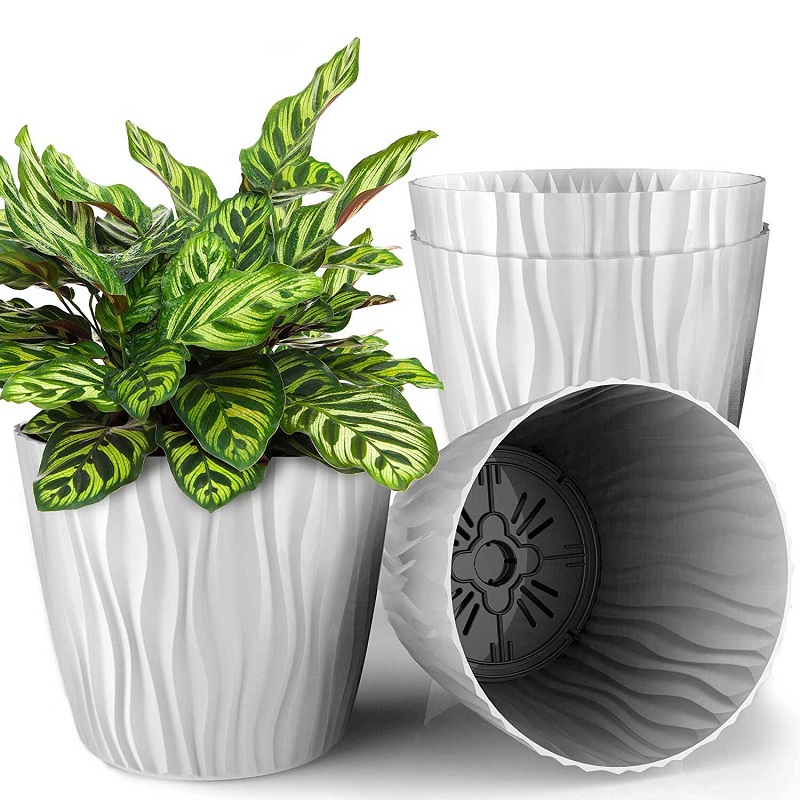Filling large flower pots effectively is crucial for healthy plant growth and longevity. This guide will walk you through the best practices and tips for properly filling large flower pots, ensuring that your plants thrive in their new homes.
Choosing the Right Soil for Large Flower Pots
Importance of Soil Quality
The quality of soil used in large flower pots is paramount for plant health. Unlike garden soil, which can be too dense and may lead to poor drainage, potting soil is specially formulated to provide the right balance of air, moisture, and nutrients. High-quality potting mix is light, well-draining, and often contains components such as peat moss, vermiculite, and perlite, which help in aeration and moisture retention.
Types of Potting Mix
When choosing a potting mix for large flower pots, consider the specific needs of your plants. For instance, succulents and cacti require a mix with excellent drainage properties, often including more sand or perlite. On the other hand, tropical plants might benefit from a mix that retains more moisture, such as one with higher peat content. Specialized mixes are available for various types of plants, so selecting the right type will significantly enhance plant growth.

Preparing the Large Flower Pots
Cleaning the Pots
Before filling a large flower pot, it is essential to clean it thoroughly. Residual salts, fertilizers, or old soil can harbor pests or diseases that could harm your plants. Scrub the pot with warm, soapy water, and rinse it well. For pots that have been used previously, consider soaking them in a solution of bleach and water to ensure they are sanitized. This step helps to prevent the transfer of any potential pathogens to your new plants.
Adding Drainage Layers
Proper drainage is critical to prevent root rot and other issues associated with excess moisture. Start by placing a layer of gravel or broken pots at the bottom of the pot. This drainage layer should be about one to two inches thick, depending on the size of the pot. The gravel allows excess water to escape from the soil, keeping the root zone from becoming waterlogged. For even better drainage, consider adding a layer of landscape fabric over the gravel before filling in the potting mix. This fabric helps prevent soil from washing away while still allowing water to drain.
Filling the Pot with Soil
Mixing the Soil
To ensure that the potting mix is evenly distributed and well-aerated, it’s a good idea to mix the soil thoroughly before filling the pot. If you are using multiple types of potting mix, blend them together in a large container or wheelbarrow. This step ensures that your plants receive a consistent mix of nutrients and drainage properties throughout the pot. Mixing in some slow-release fertilizers can also be beneficial, as it provides essential nutrients for plant growth over time.
Filling the Pot Correctly
When filling a large flower pot, avoid overpacking the soil. Fill the pot to about one inch below the rim to leave space for watering and to prevent soil from spilling out. Lightly tap the sides of the pot to settle the soil without compacting it too much. Proper soil settling helps to reduce air pockets, which can negatively affect root development. Once the pot is filled, gently level the surface of the soil to ensure an even planting area.
Planting in Large Flower Pots
Positioning the Plants
Before planting, arrange your plants in the pot while the soil is still loose. This allows you to adjust the spacing and placement to achieve the desired aesthetic and to ensure that each plant has enough room to grow. Pay attention to the plant’s height and spread at maturity to avoid overcrowding. Make sure taller plants are placed towards the back or center, while shorter plants should be positioned towards the front or edges of the pot.
Planting Technique
To plant, create a hole in the soil slightly larger than the plant’s root ball. Gently remove the plant from its nursery container and loosen any tightly bound roots. Place the plant in the hole, making sure it is at the same depth as it was in its previous container. Fill in around the root ball with soil, pressing it down lightly to eliminate air pockets. Water the plant thoroughly after planting to help it settle into its new home and to provide essential moisture.

Caring for Plants in Large Flower Pots
Watering Practices
Plants in large flower pots often require different watering practices compared to those planted in the ground. The soil in pots can dry out more quickly, especially during hot weather. Check the soil moisture regularly by sticking your finger about an inch into the soil. Water when the top inch of soil feels dry. Ensure that water drains out of the bottom of the pot, as this indicates that the entire root zone is being hydrated. Avoid letting the pot sit in a saucer full of water, as this can lead to root rot.
Fertilizing and Maintenance
Plants in pots rely on you for all their nutrient needs since they do not have access to the soil’s natural nutrients. Use a balanced, slow-release fertilizer to provide essential nutrients throughout the growing season. Follow the manufacturer’s instructions for application rates and frequency. Additionally, periodically check for pests and diseases, as container plants can be more susceptible to these issues. Remove any dead or diseased foliage and adjust your care routine as needed to keep your plants healthy and vibrant.
Common Issues and Troubleshooting
Overwatering and Root Rot
One common issue with large flower pots is overwatering, which can lead to root rot. Symptoms include yellowing leaves, a musty smell, and soft, mushy roots. To prevent this, ensure your pot has adequate drainage and only water when the top inch of soil feels dry. If root rot does occur, remove the affected plants, trim any rotten roots, and let the soil dry out before replanting.
Underwatering and Drought Stress
Underwatering can cause plants to suffer from drought stress, resulting in wilted leaves, dry soil, and stunted growth. To address this, check soil moisture regularly and water deeply when needed. Consider using self-watering pots or adding a water-retaining gel to the soil mix to help maintain consistent moisture levels.
Seasonal Care for Large Flower Pots
Summer Care Tips
In summer, large flower pots can dry out quickly due to heat and sun exposure. To keep plants hydrated, water more frequently and consider using mulch to retain soil moisture. Additionally, move pots to a shaded location during the hottest part of the day if possible.
Winter Care Tips
In winter, plants in large pots may be vulnerable to cold temperatures and frost. If possible, move pots to a sheltered location or insulate them with materials like burlap or foam. For plants that need to stay outside, reduce watering and avoid fertilizing, as growth slows down in cooler temperatures.

Enhancing Aesthetic Appeal
Adding Decorative Elements
Large flower pots offer a great opportunity to enhance your garden’s aesthetic appeal. Consider adding decorative elements such as pot covers, trellises, or ornamental stones. You can also use a combination of plants with varying heights, colors, and textures to create visually interesting arrangements.
Using Plant Stands and Supports
To elevate the look of your large flower pots, use plant stands or supports. This can not only improve the visual appeal but also make it easier to manage watering and maintenance. Stands can add height and help showcase the plants, making your container garden a focal point.
Container Rotation and Planting Strategies
Rotating Plants for Optimal Growth
Rotating plants in large flower pots can help ensure even growth and prevent nutrient depletion. Move plants around periodically to give them access to different light conditions and reduce the risk of pest infestations. This strategy also helps balance soil nutrient levels and encourages healthier plant development.
Companion Planting
Companion planting involves growing plants together that benefit each other. In large flower pots, this can be particularly effective. For example, planting marigolds with tomatoes can help deter pests. Research plant compatibility to make the most of your container garden and promote a thriving plant environment.
By addressing common issues, adapting to seasonal changes, enhancing visual appeal, and employing strategic planting techniques, you can maximize the success of your large flower pots and enjoy a vibrant, flourishing garden year-round.
Conclusion
Filling large flower pots correctly is a fundamental step in ensuring that your plants remain healthy and flourish. By choosing the right soil, preparing the pot properly, and following best practices for planting and care, you create an optimal environment for your plants. Regular maintenance and attention to detail will help your large flower pots become a beautiful and thriving addition to your garden or living space. With these tips, you’re well on your way to creating a stunning display of vibrant and healthy plants.
